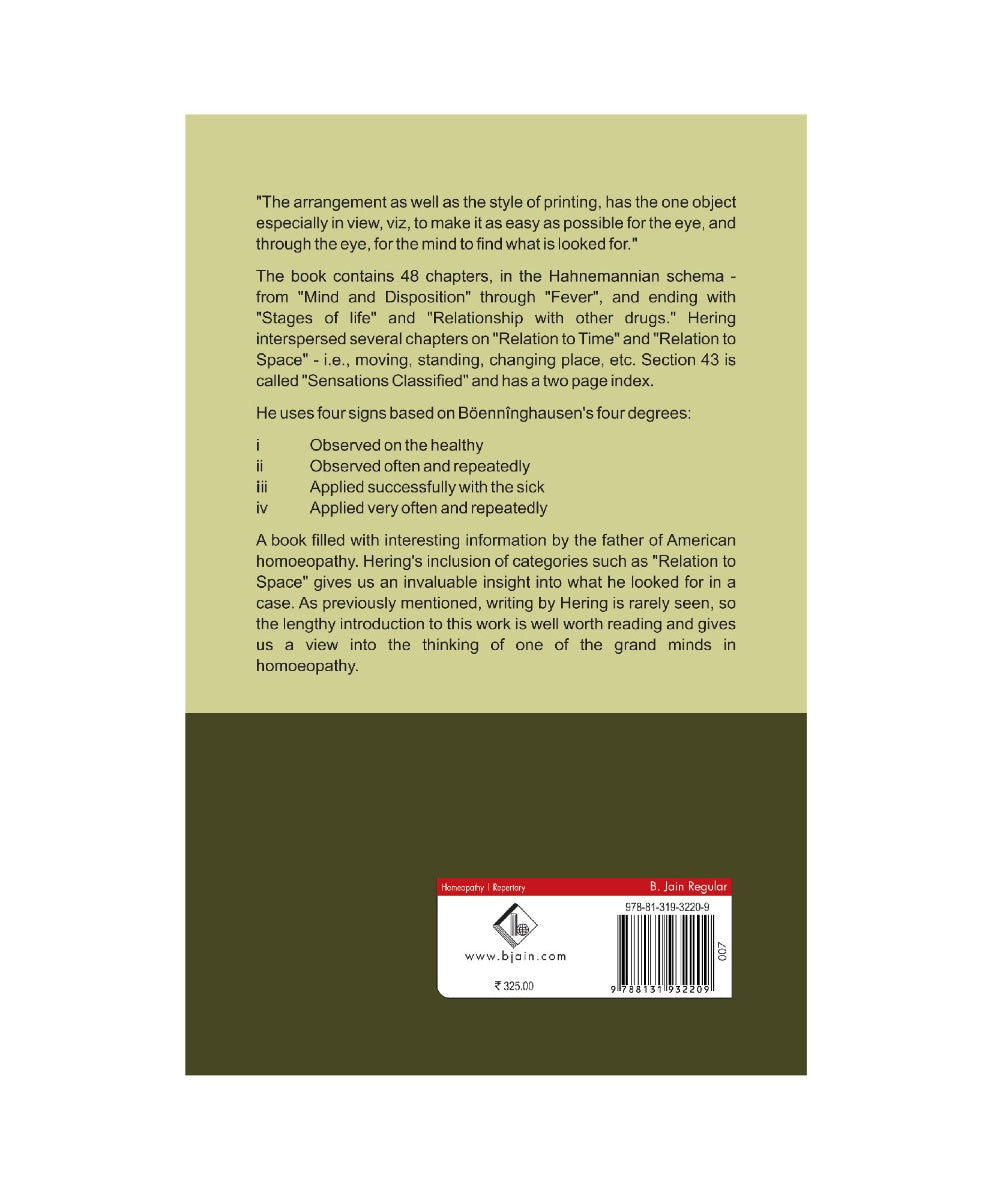Analytical Repertory Of The Symptoms Of The Mind
Analytical Repertory Of The Symptoms Of The Mind
Couldn't load pickup availability
શેર કરો
The arrangement, as well as the style of printing, has one object especially in view, viz. to make it as easy as possible for the eye, and through the eye, for the mind to find what is looked for. This book though old (1881) but one of the important repertory, exclusively intended to analyze the mind symptoms. C. Hering has highlighted important aspects like differentiating clinical symptoms and drug proving symptoms in the materia medica, meaning of synthesis and analysis, Boenninghausen’s repertory, Fragmenta, Hahnemann’s arrangement of symptoms etc. The beginning sections like Introduction, How to use the book, Arrangement are very informative regarding understanding Hering’s concept. Also information regarding genius epidemics, nosodes is given. The beginning content of the book is explanatory for the rest of the book filled with interesting information by the father of American homoeopathy.The book contains 48 chapters, in the Hahnemann schema from "Mind and Disposition" through "Fever", and ending with "Stages of Life" and "Relationship with other drugs". Hering interspersed several chapters on "Relation to Time" and Relation to Space"- i.e. moving, standing, changing place, etc. Section 43 is called "Sensations Classified" and has a two page index.He uses four signs based on Boenninghausen's four degrees: i Observed on the healthyii Observed often and repeatedlyiii Applied successfully with the sickiv Applied very often and repeatedlyHighlight -Hering's inclusion of categories such as "Relation to Space" gives us an invaluable insight into what he looked for in a case. As previously mentioned, writing by Hering is rarely seen, so the lengthy introduction to this work is well worth reading and gives us a view into the thinking of one of the grand minds in homoeopathy.






